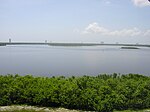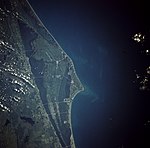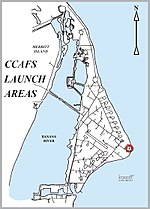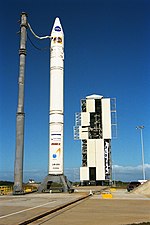Cape Canaveral Launch Complex 36

Launch Complex 36 (LC-36)—formerly known as Space Launch Complex 36 (SLC-36) from 1997 to 2010—is a launch complex at Cape Canaveral Space Force Station in Brevard County, Florida. It was used for Atlas launches by NASA and the U.S. Air Force from 1962 until 2005.Blue Origin has leased the launch site since 2015 in order to build a new launch site for launching the company's orbital rockets. Orbital launches are expected to begin from LC-36 no earlier than 2024, and the first launch vehicle slated to launch there is New Glenn, under development by Blue Origin since 2012.Historically, the complex consisted of two launch pads, SLC-36A and SLC-36B, and was the launch site for the Pioneer, Surveyor, and Mariner probes in the 1960s and 1970s. There were a total of 145 launches from LC-36 during the period that the US government operated the launch complex in the first five decades of spaceflight. The Atlas rockets launched from Complex 36 were subsequently superseded by the Atlas V launch vehicle, which, as of September 2019, launches from Complex 41 at Cape Canaveral since beginning in 2020.
Excerpt from the Wikipedia article Cape Canaveral Launch Complex 36 (License: CC BY-SA 3.0, Authors, Images).Cape Canaveral Launch Complex 36
Lighthouse Road,
Geographical coordinates (GPS) Address Nearby Places Show on map
Geographical coordinates (GPS)
| Latitude | Longitude |
|---|---|
| N 28.470555555556 ° | E -80.54 ° |
Address
Lighthouse Road
Florida, United States
Open on Google Maps









